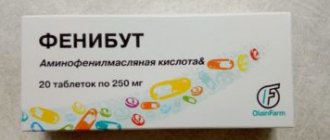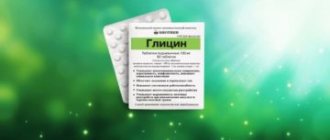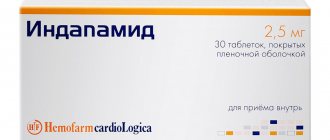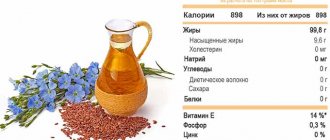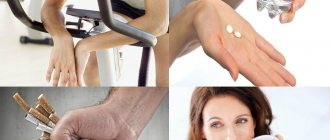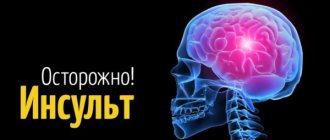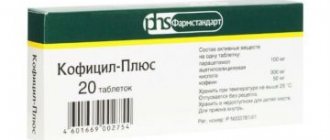Phenibut is prescribed for vegetative-vascular dystonia to improve memory, attention, concentration, thinking, and coordination. The drug will help improve sleep, eliminate mental disorders and is used to combat hypoxia. During the course, the patient begins to feel better. Memory and blood circulation improve, panic attacks disappear. You can use phenibut after examination by a neurologist or psychiatrist. Self-administration of medication leads to negative consequences.
Share
Tweet
Share
Cool
Send
Indications for use
The drug is used in the treatment of the following ailments:
- Insomnia, fear, anxiety and increased tension;
- Asthenic conditions;
- Meniere's disease;
- Dizziness caused by dysfunction of the vestibular apparatus;
- Nervous tic in a child, as well as stuttering;
- In the complex treatment of alcoholism, as well as to eliminate somato-vegetative and pathological disorders caused by withdrawal syndrome.
Interaction
Phenibut can be combined well with most drugs used in the treatment of VSD and mental disorders, but during treatment it is necessary to completely stop drinking alcohol. Alcohol-containing drinks can have the opposite effect of the drug, which neutralizes its effect and negatively affects well-being.
Is Phenibut effective for VSD and cervical osteochondrosis?
Side effects
Possible side effects:
- Problems associated with the gastrointestinal tract - nausea. Usually the symptom is observed at the beginning of the treatment course;
- Disorders of the skin and subcutaneous tissues. Side effects occur in the form of itching, skin rashes and other allergic reactions;
- Problems with the nervous system - increased drowsiness (especially at the beginning of therapy), agitation, dizziness and headaches, excessive irritability, anxiety;
- Problems with the liver, as well as the biliary tract - hepatotoxicity (subject to long-term use of high dosages).
Phenibut for VSD
Phenibut is part of a number of nootropics and is one of the popular drugs of its type. Both doctors and patients praise the medicine. Why the drug is so good:
- convenient release form;
- can be purchased at any pharmacy;
- is not addictive;
- inexpensive cost;
- desired and quick effect.
During VSD, doctors prescribe a course of treatment with phenibut to normalize the functioning of the nervous system and improve blood supply to the brain. By choosing the right course of treatment and following it, you can prevent unwanted symptoms of dystonia.
Use of the drug and recommended dosages
Phenibut for heart pain and other ailments can be taken orally, after meals.
For adults, it is recommended to drink about 0.25-0.5 g, three times a day. The permissible maximum single dose is 0.75 g; for patients over 60, the figure should not exceed 0.5 g.
Children aged 8-14 years are allowed to take no more than 0.25 g of the drug three times a day. Over 14, the drug is prescribed in full dosages. To get rid of withdrawal symptoms caused by alcoholism, 0.25-0.5 mg is allowed at the beginning of therapy (3 times throughout the day), as well as 0.75 g before bed. Further, the dosage must be reduced until it reaches the usual level for adults.
For the treatment of acute syndrome and Meniere's disease, it is recommended to drink 0.75 g, do this three times a day. The duration of the course is a week.
Patients with vestibular disorders are allowed to drink 0.25-0.5 g of Phenibut three times a day. The course lasts a week, then you need to move on to a dosage of 0.25 g, once a day for another 5 days. In cases where the disease is mild, 0.25 g of the drug twice a day (week) is acceptable, and then 0.25 g once a day for about another week.
Getting rid of dizziness caused by disruption of the normal functioning of the vestibular vascular analyzer and traumatic origin involves a 12-day course of 0.25 g, three times a day.
Reviews
Let's look at reviews of Phenibut for VSD.
This drug has long been used for the successful treatment of vegetative pathologies. Doctors share in the comments that they prescribe it as a remedy that has a minimum set of certain unwanted contraindications and effects. Positive reviews are also given by patients who take Phenibut for VSD. Among the main advantages of the drug in question, they indicate the following:
- A rapid therapeutic effect occurs. The main manifestation of autonomic disorders begins to subside after the first day of use.
- There is no feeling of inhibition and relaxation. Patients, on the contrary, notice a significant increase in their performance and, according to them, thoughts in their heads become clear, and their mood, in turn, improves.
- The medication helps to cope with somatic manifestations, having a positive effect on the psychological state. If you take it during panic attacks, then anxiety disappears after the first pill, patients overcome their depressive state, getting rid of causeless panic.
True, there is a category of people who did not like this drug. They write that after treatment, panic attacks returned. In order to exclude this, an integrated approach to treatment is needed.
Compatibility
Mexidol
Mexidol is an antioxidant drug that increases resistance to stress, improves blood circulation, normalizes metabolic processes in the body, with the active ingredient ethylmethylhydroxypyridine succinate. Not all patients can be treated with this drug due to contraindications to its use; the drug is poorly tolerated with high blood pressure and problems with the liver or kidneys.
The question often arises about whether it is possible to take medications together. From a pharmacological point of view, they are compatible. Both products have a calming effect, so they enhance each other's effect.
The combined use of the drugs Phenibut and Mexidol is possible only as prescribed by the attending physician, depending on the disease, characteristics of the body and contraindications. To avoid negative consequences, medications should be taken together only in accordance with the regimen specified in the instructions and doctor’s prescriptions regarding dosage, frequency of administration and time interval for use of the drugs. The dosage of each medication will be reduced. There is no need to separate medications from each other by time.
Coffee (caffeine)
Caffeine provokes increased activity, stimulates, increases cardiac activity, accelerates the pulse, dilates blood vessels, increases energy and improves mood. Caffeine is found not only in coffee, but also in other foods and drinks - tea, chocolate, and in painkillers.
Since Phenibut has a calming effect, it can be taken with coffee. While taking the product and caffeine, you must avoid other caffeine-containing drinks. This is due to the fact that caffeine has a stimulating effect. Large doses of caffeine can cause overexcitement, depletion of the central nervous system and a strong increase in blood pressure.
Glycine
Glycine is an aminoacetic acid (amino acid) that is a constituent of proteins. It has a rate-reducing effect on the central nervous system and has antioxidant and antitoxic properties. The product improves metabolism, with regular use, stress resistance increases, aggressiveness and conflict are reduced, emotional stress and anxiety are reduced, and sleep is normalized.
Phenibut and Glycine are similar analogues; both activate neurons in the cerebral cortex, have a positive effect on mental state, improve sleep, and relieve stress. They belong to different pharmacological groups and can be taken simultaneously, and the drugs will enhance each other's effects.
Phenibut increases the effectiveness of any psychoactive substance, and the amino acid reduces side effects. Therefore, they are often prescribed together. Since the effect of the amino acid is mild, dosage adjustment is not required.
However, in individual cases, when taken together, side effects may occur, such as drowsiness, weakness, and decreased concentration.
Corvalol
Corvalol is a drug with antispasmodic and sedative effects. Consists of peppermint oil, ethyl alcohol alpha-bromo-iso-valeric acid and phenobarbital. The drug relieves spasms, reduces anxiety, and dilates blood vessels. It is not recommended to take it for a long time due to the negative effects of its components.
Combined use with Phenibut can be prescribed for anxiety, various worries, panic attacks, for psychological disorders in the process of giving up alcohol, in the complex treatment of VSD.
The drugs are compatible, but their combination should be taken only according to the regimen prescribed by a qualified specialist. Phenibut repeatedly increases the effect of phenobarbital and ethyl alcohol, which are part of Corvalol.
Fluoxetine
Fluoxetine is an anti-depression drug, an antidepressant. The medicine increases the production of serotonin, improving mood. Prescribed for panic attacks, mental disorders, neuroses. The medicine has a wide range of side effects and is prescribed when psychotherapy does not bring results.
It is allowed to take simultaneously with Phenibut. Phenibut, due to its anxiolytic effect, enhances the effect of the antidepressant and eliminates its negative side reactions. When combining medications, you can easily cope with manifestations of panic and fear, dizziness and migraines, anxiety, and sleep disorders.
In case of joint use, the dosage of drugs is determined exclusively by a qualified specialist depending on the specific disease.
Pantogam
Pantogam is a nootropic that has a wide spectrum of action. The medicine reduces motor excitability, restores memory, stimulates mental and physical performance, reduces convulsive syndrome, and slightly reduces blood pressure. Prescribed for stuttering, mental retardation, cerebral vascular disorders, after traumatic brain injury, epilepsy. The active ingredient is hopantenic acid.
The drug is compatible with Phenibut. Both drugs have a different mechanism of action, but belong to the same group of nootropic drugs, increase brain efficiency, intelligence and performance, improve attention and memory. When used together, the effect is enhanced.
Prescribed together when, against the background of brain diseases, insomnia appears, excitability, irritability, and fears increase. The decision on simultaneous use is made by the attending physician; they must be taken strictly according to the prescribed plan.
Amitriptyline
Amitriptyline is an antidepressant. The drug has a sedative and hypnotic effect, reduces pain. It has a wide range of contraindications.
In some cases, it can be taken with Phenibut. Prescribed simultaneously for increased anxiety, severe and prolonged depression, insomnia associated with mental disorders. Medicines belong to different drug groups and differ in their mechanism of action. But when combined, they enhance each other’s effect. Phenibut reduces the side effects of amitriptyline, for example, it reduces the degree of aggression, nightmares, disturbances in memory and motor coordination, and the risk of epileptic attacks.
At the same time, it can be taken only in certain cases and strictly as prescribed by a specialist, depending on the patient’s condition, taking into account contraindications. In this case, the dosage of medications must be reduced to avoid such negative consequences as excessive hypnotic effects and lethargy.
Teraligen
Teraligen is an antipsychotic drug primarily used as a sedative and anti-anxiety agent. Prescribed in cases of anxiety, anxiety, neurosis, tendency to hysteria, depression and phobias, insomnia. It has a significant number of contraindications and possible side effects.
Together with Phenibut, you can take it only on the recommendation and under the supervision of a doctor, according to the doses and regimen of use adjusted by a specialist. Medicines reinforce each other. Together they can be prescribed to eliminate anxiety, neuroses, improve sleep, eliminate spasms, and improve brain activity. If you do not follow the recommendations of a medical specialist for joint use, there is a possibility of overexcitation, or, conversely, severe depression of the nervous system.
Magnesium B6
Magnesium B6 is a medicine that replenishes magnesium deficiency. Consists of two components: magnesium and vitamin B6. It is drunk when there is a lack of magnesium, which appears due to an unbalanced diet, during pregnancy, increased mental and physical stress and stress. The substance stimulates the production of blood cells, regulates phosphorus metabolism, maintains cholesterol levels, and relieves vascular spasms. The vitamin increases the absorption of the main substance, normalizes the functioning of the nervous system and improves heart function.
Can be taken together with Phenibut. The dosage and regimen are prescribed by a qualified specialist - the attending doctor, since when determining the doses of drugs, you need to focus on the characteristics of the condition.
Picamilon
Picamilon is a nootropic drug. It is prescribed for insomnia, neuroses, depression, instability in the emotional sphere, vegetative-vascular dystonia, and for the treatment of cognitive diseases. The active substance is nicotinoyl gamma-aminobutyric acid and the additional one is nicotinic acid (vitamin B).
The drug is compatible with Phenibut. Both drugs are based on aminobutyric acid, but in different chemical forms. Both are used to treat similar disorders. When used simultaneously, they increase each other's effect.
The possibility of taking two medications together, the dosage and administration plan are determined by the attending physician. Doses in this case are reduced due to a similar therapeutic effect. In some cases, compatibility of funds is undesirable.

